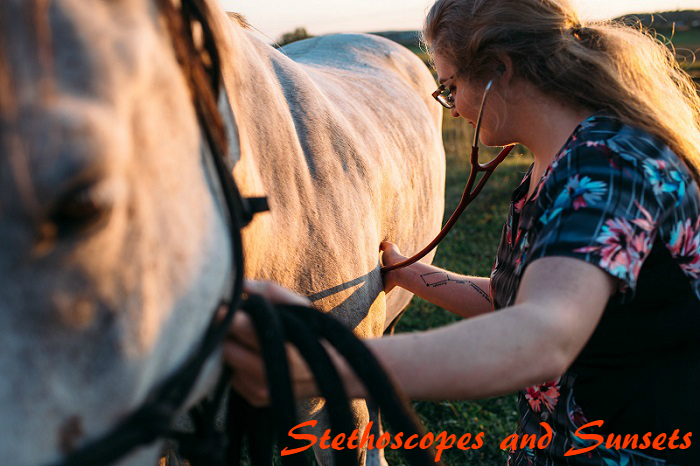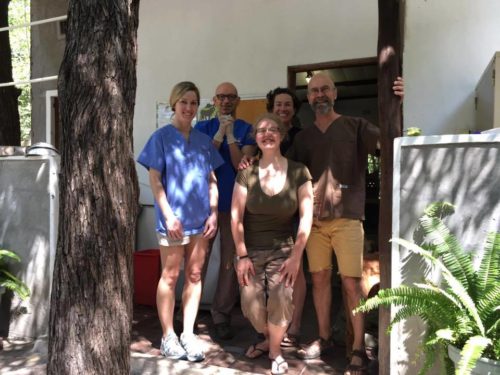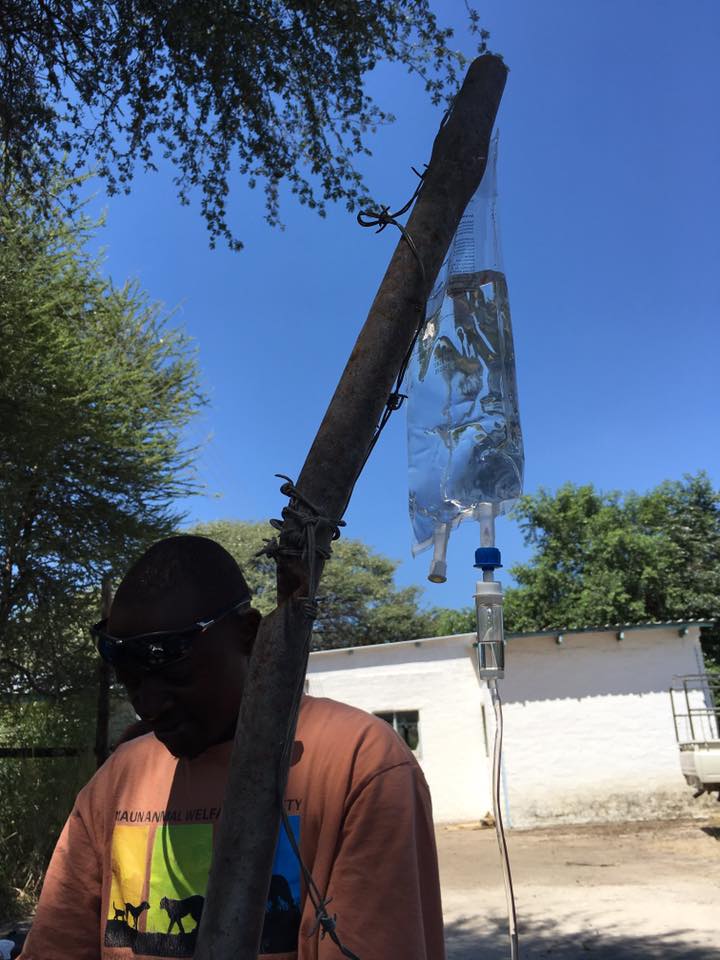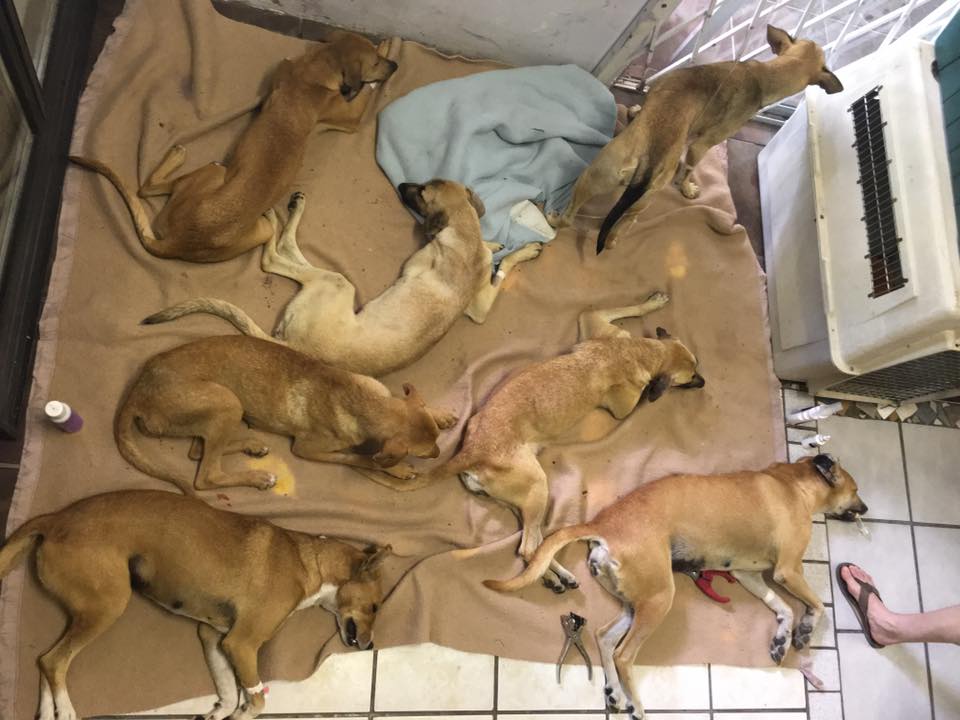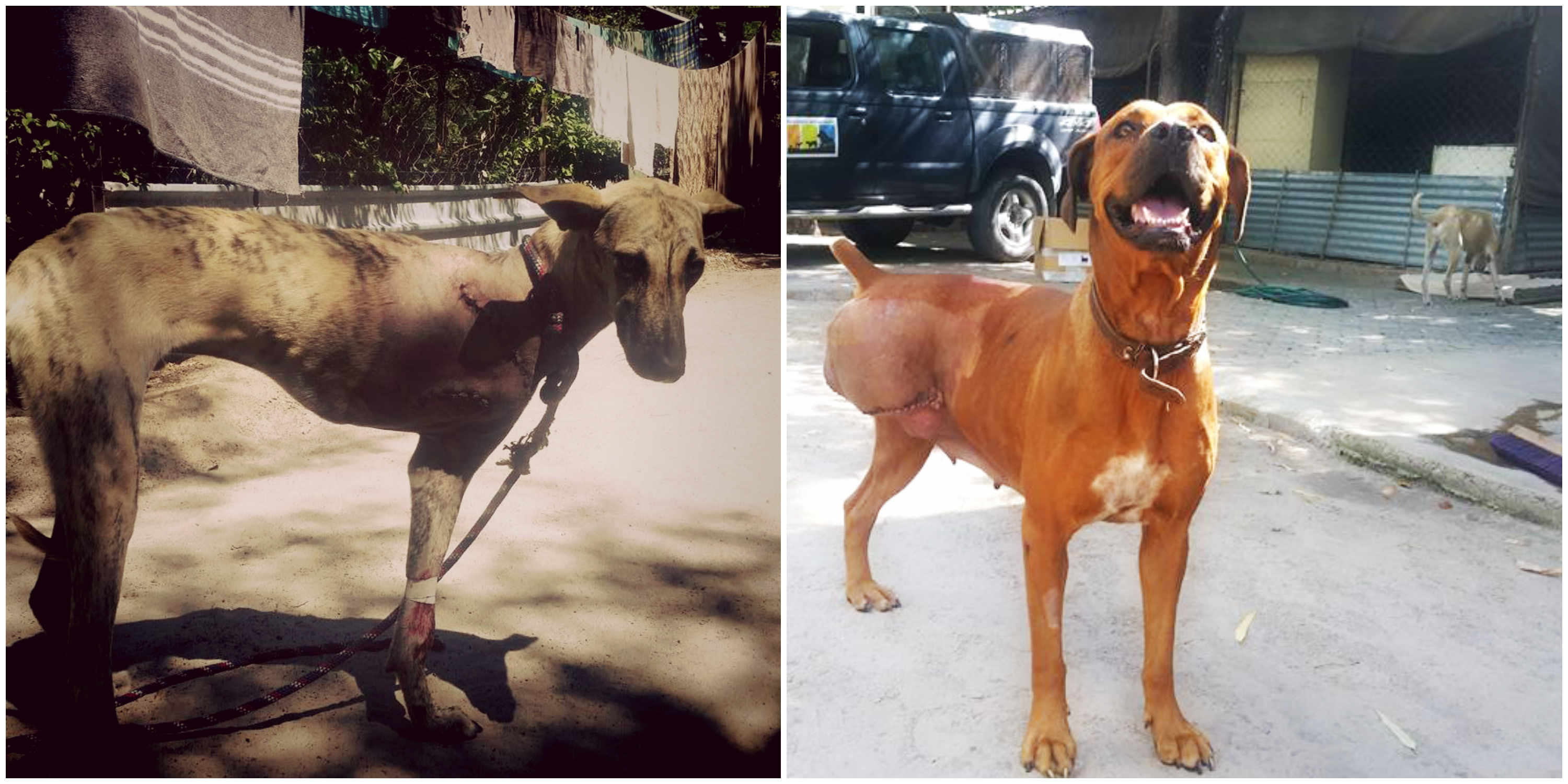
[Punch (brindle male, right front lower limb gangrene) and Zuka (Boerboel female, severe compound fracture of lower right hind leg), two of my Botswana amputations. Both of these pictures were taken at less than 24 hours after surgery — although Punch was pretty sulky about the leash, Zuka wasn’t shy about giving us a smile!]
Limb amputations are a relatively common surgery both in my current practice and during my volunteer trips. There are many reasons why a vet may wish to remove a leg; the presence of a tumor, a break which cannot be fixed for whatever reason physical or financial, nerve damage, severe soft tissue damage, infection…the list goes on. But amputations are one of my favorite surgeries to participate in for the simple reason of just how successful they can be at restoring life and removing pain. Read on for a glimpse into the life of just a couple of the amputation cases I’ve been privileged enough to work with.
